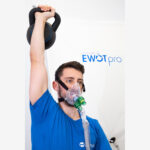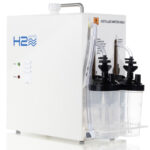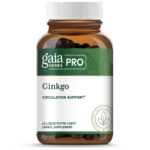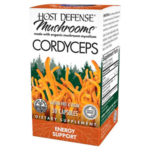ATHLETES AND ALTITUDE
A Naturopathic approach to preventing adverse symptoms during competition at elevation
Altitude can have an impact on the overall well-being and performance. Higher elevations mean lower oxygen concentrations in the atmosphere. Athletes who are not yet adapted to the change in lower oxygen concentrations could present with symptoms such as headache, nausea, insomnia, light-headedness, brain fog, anorexia and more seriously, altitude sickness.
Those who live and/or train at high altitude are better adapted to the lower oxygen concentrations. The physiological adaptations that occur when training at altitude are a performance advantage for the endurance athlete.
For those athletes who are not yet adapted to the higher altitude, below is a list of strategies to mitigate the potential adverse symptoms associated with competing at high altitude.
Gradual Ascent
The best strategy to prevent high altitude sickness is a gradual ascent to promote acclimatization. Once above 2500m (8,202ft), the altitude at which one sleeps should not be increased by more than 600m (1,968ft) in 24 hrs. and then an extra day should be added for the acclimatization for every increase of 600m to 1200m (3,937ft) in this altitude. For purposes of competing in Mammoth, CA (7,900 ft), it may be a good strategy to find accommodation in Bishop, CA, approximately a 45 minute drive at lower altitude.
Training Technologies: Oxygen and Hydrogen
Training strategies such as intentionally lowering oxygen concentrations will allow the body to adapt to the higher altitude by signaling the kidneys to produce a hormone called erythropoietin. This may be accomplished by training at elevation and sleeping in lower elevations. If one does not have access to training at elevation, it is possible to mimic the training at altitude with technologies such as the EWOT.
EWOT stands for Exercise With Oxygen Therapy. It is an oxygen device which connects to your breath and acts on the body’s physiology by alternating between oxygen-rich gas (~95% oxygen) to a lower concentration oxygen gas. This is similar to exercising at an altitude of 12,000 feet (~13% oxygen). By alternating between high and low oxygen concentrations, you’re able to simulate a high-altitude workout in short bursts (30 seconds).
H2 Hydrogen Inhalation and Drinking System
Molecular hydrogen has been shown to achieve a number of important benefits. It can improve athletic performance because, via passive diffusion, it quickly reaches subcellular compartments and helps protect proteins, RNA, DNA, mitochondria and cell membranes from damage.
Herbal Support
Ginkgo Biloba has been used prophylactically to prevent headaches at altitude. The mechanism of action is unknown. It may block inducible nitric oxide; an antioxidant oxygen radical scavenger; may block platelet-activating factor. Gingko Biloba must be used in caution in pregnant women and individuals on antithrombotic agents.* Studies show, “Ginkgo biloba prevented acute mountain sickness during a gradual ascent to 5000 m and reduced both the symptoms and the incidence of acute mountain sickness by 50 percent during an abrupt ascent to 4100 m.”
When taken prophylactically, 4-5 days before the event, likelihood of headache will decrease.
Cordyceps has been traditionally used in Asia for strenuous, high altitude activities and as an immune tonic. Additionally it is known for its antioxidant support, DNA-protecting properties, and lung-supporting effects, Cordyceps also supports an engaged and balanced immune response. Cordyceps supports energy, stamina and endurance, promotes healthy respiration, kidney function, brain health with aging and more. Dosing for high altitude varies. Some individuals may start 1 month prior to their high-altitude event at around 2000mg three times per day.
References:
Hackett. “High-Altitude Illness.” New England Journal of Medicine, vol. 198, no. 1, 1928, pp. 50–50, https://doi.org/10.1056/nejm192802231980115.
PromoLife
Medical Disclaimer: Information provided in this blog is for informational purposes only. However, this information is NOT intended as a substitute for the advice provided by your physician or other healthcare professional, or any information contained on or in any product. Do not use the information provided in this blog for diagnosing or treating a health problem or disease, or prescribing medication or other treatment. Always speak with your physician or other healthcare professional before taking any medication or nutritional, herbal or other supplement, or using any treatment for a health problem. If you have or suspect that you have a medical problem, contact your health care provider promptly. Do not disregard professional medical advice or delay in seeking professional advice because of something you have read in this blog post. These statements have not been evaluated by the Food and Drug Administration. This product is not intended to diagnose, treat, cure, or prevent any disease.



